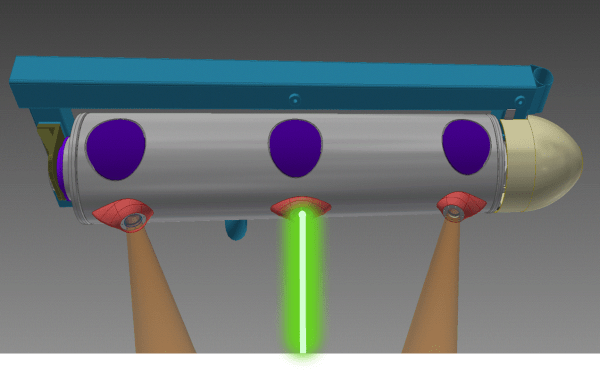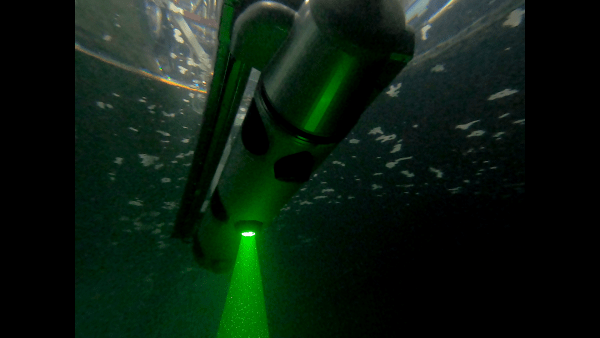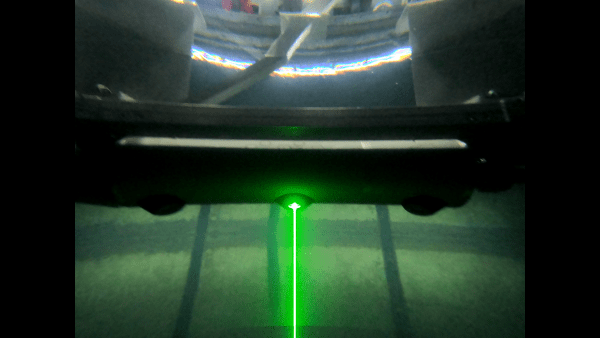MARIN’s new ‘FlowPike’ makes ship-scale flow measurements possible
 |  |
| The FlowPike as configured to measure propeller inflow | FlowPike sketch indicating the two cameras and the laser sheet from the centre port |
With the growing availability of computing power, the means of resolving flow field details is also increasing. Although a simulation of ship-scale flows can be readily available, it is key to validate the approach and modelling actually captures all the relevant physics. In-depth knowledge on ship-scale flows is still rather limited, partly due to challenges in performing detailed flow measurements in operational conditions.
In 2017, MARIN started the development of a measurement solution to close the gap in knowledge on ship-scale flows. With a strong belief in the scalability of a laboratory measurement technique, MARIN joined forces with laser imaging experts at LaVision and started researching the possibilities of measuring flow fields at large scale using Particle Image Velocimetry (PIV).
Proof of concept investigations included PIV tests in seawater, using the naturally present particles for tracing the flow, and comprehensive setups to validate the functioning of the technique at a larger scale (larger stand-off distances and wider fields of view).
Today, after numerous iterations, tests in basins and seawater, engineering and manufacturing, we have arrived at a unique measurement device: the FlowPike. Using a stereoscopic PIV setup with two cameras, the setup is able to measure all three velocity components inside a two-dimensional plane (2D3C). With reliability in mind, all optical components are rigidly fixed in an underwater torpedo-shaped housing. The housing is able to rotate about its longitudinal axis, allowing a large area to be scanned.
With the device now ready to be deployed at sea, its first mission will be performing wake field measurements in the JoRes Joint Research Project, www.marin.nl/jips/jores. If you are inspired to use the FlowPike in your own field, get in touch.
 |  |
Function tests in the Deepwater Basin

